Arthritis Pain in the Great Toe Joint
The great toe joint, or first metatarsophalangeal (MTP) joint, is a common site for arthritis and pain and one of the most common complaints seen in our practice. This can greatly impact one's mobility and quality of life. Managing the condition is easier when our patients are educated. Patients come in with certain symptoms but they always ask, What caused this? Or, How did I get this?
Causes
- Osteoarthritis: Wear-and-tear arthritis that results from the degeneration of cartilage in the joint. Most of the time in my practice this occurs due to Faulty foot mechanics, most of which patients have inherited. Abnormal movement of the great toe joint or 1 of the surrounding joints is typically the underlying cause. Joints that do not function properly tend to wear out faster.
- Autoimmune: An autoimmune condition that causes inflammation in the joints, conditions like rheumatoid arthritis and psoriatic arthritis
- Gout: A form of arthritis caused by the accumulation of uric acid crystals in the joint. Uric acid is a byproduct of metabolism that is filtered by her kidneys from our blood. We typically then excrete it out. Sometimes we produce too much or excrete too little in the uric acid can then accumulated in our joints or other tissues, where it will form razor sharp needle-like crystals that are very damaging and cause a lot of Inflammation to the joint or surrounding tissues. This can be a very destructive process.
- Injury: Trauma to the joint can lead to arthritis over time. This can occur from one injury or it can occur from multiple episodes of microtrauma, meaning small repeated nonpainful injuries.
Symptoms, These include:
- Pain and tenderness in the great toe joint
- Swelling and stiffness
- Reduced range of motion
- Difficulty walking or bearing weight on the toe.
You can have one or any combination of these.
Treatment Options
Treatment for arthritis in the great toe joint can vary depending on the severity and underlying cause. Here's what you can do about it.
- Medications: Anti-inflammatory drugs and pain relievers can help manage symptoms. If condition is related to gout than managing the uric acid levels becomes very important. If condition is related to underlying autoimmune processes, managing those autoimmune problems with a rheumatologist is vital. If you don't have kidney disease, heartburn or stomach ulcers and you typically don't have issues with taking medications like ibuprofen or naproxen, try this first to see if it gives you any relief.
- Orthotics: Custom shoe inserts can provide support and alleviate pressure on the joint As well as alter the foot mechanics Which can be very useful in prevention.
- Physical Therapy: Exercises to improve strength and flexibility in the toe.
- Injections: Cortisone can be a useful first line treatment for quick pain reduction and to block inflammation. It is important to understand that these are not a "cure." What is typically limited to only a few of these.
- Regenerative therapies: Here at Centennial foot and ankle we offer multiple regenerative options for your pain including nano-PRP therapy, PRP injections, laser therapy, amnio therapy and exosome therapy. These can be very advantageous and excellent ways to eliminate your pain and prevent the need for surgery or greatly delay the need for surgery.
- Surgery: In severe cases, or those recalcitrant to conservative and regenerative treatments, surgical interventions like joint fusion or replacement may be a last resort.
Call or contact us now to come see Dr. Biesinger for an educational discussion about your great toe joint pain. You'll be glad you didn't wait.


